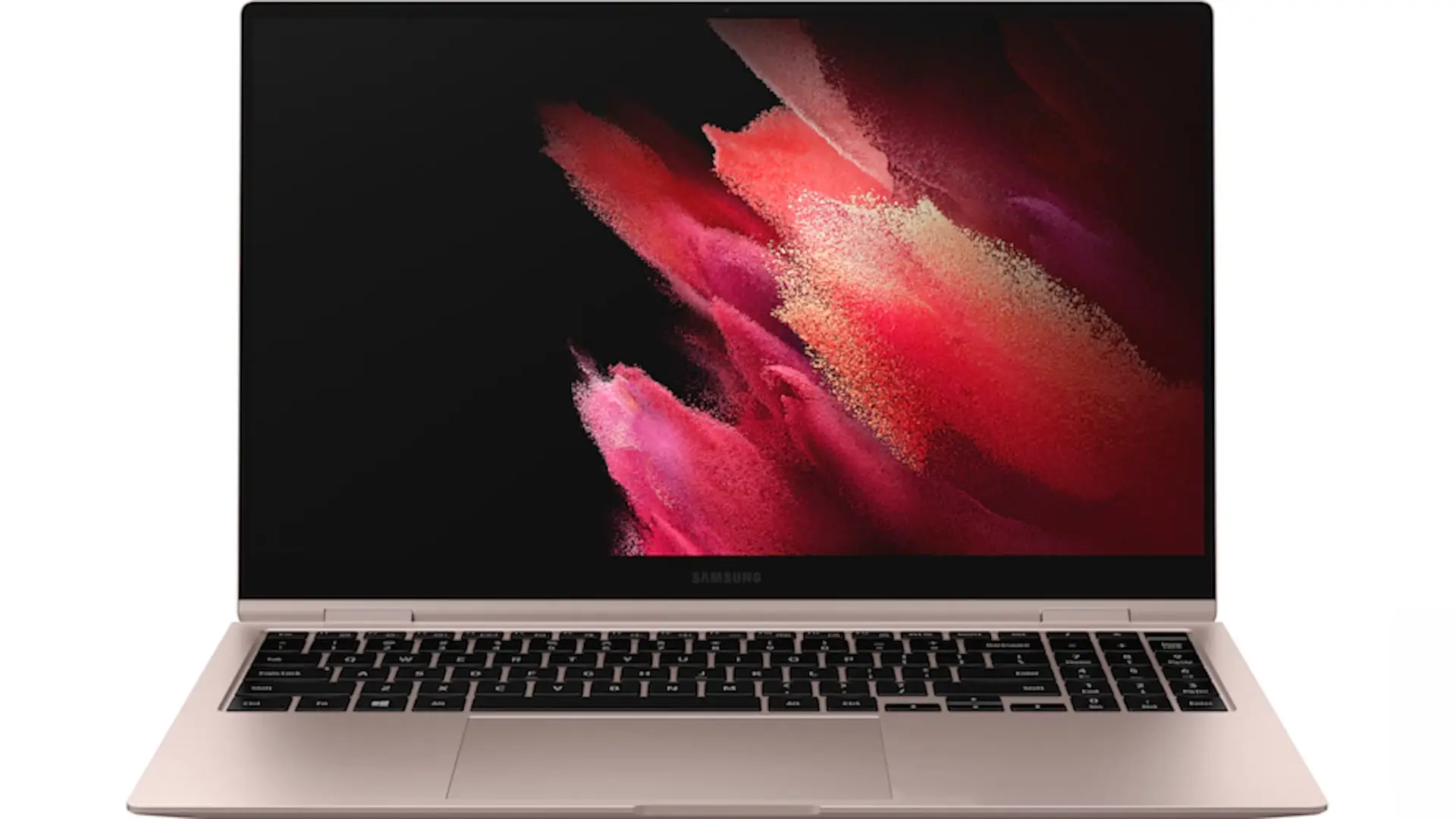In this article, I give you my Samsung Galaxy Book Pro 360 review with specs included. This is a very slim and light 15.6-inch laptop. I have a 360-degree convertible, there is a non-360 version of this as well.
This is the highest end of the several laptops that Samsung is offering for 2021 but still, it’s priced pretty well. Starting at $1099 for the base model, higher-end configurations are around $1299. I’ve always reviewed the Samsung laptops with the S-pens because they are so great for art.
They use the S-pen which is Wacom EMR which is a very close cousin to the Wacom EMR you see in things like the Cintiq Pro.
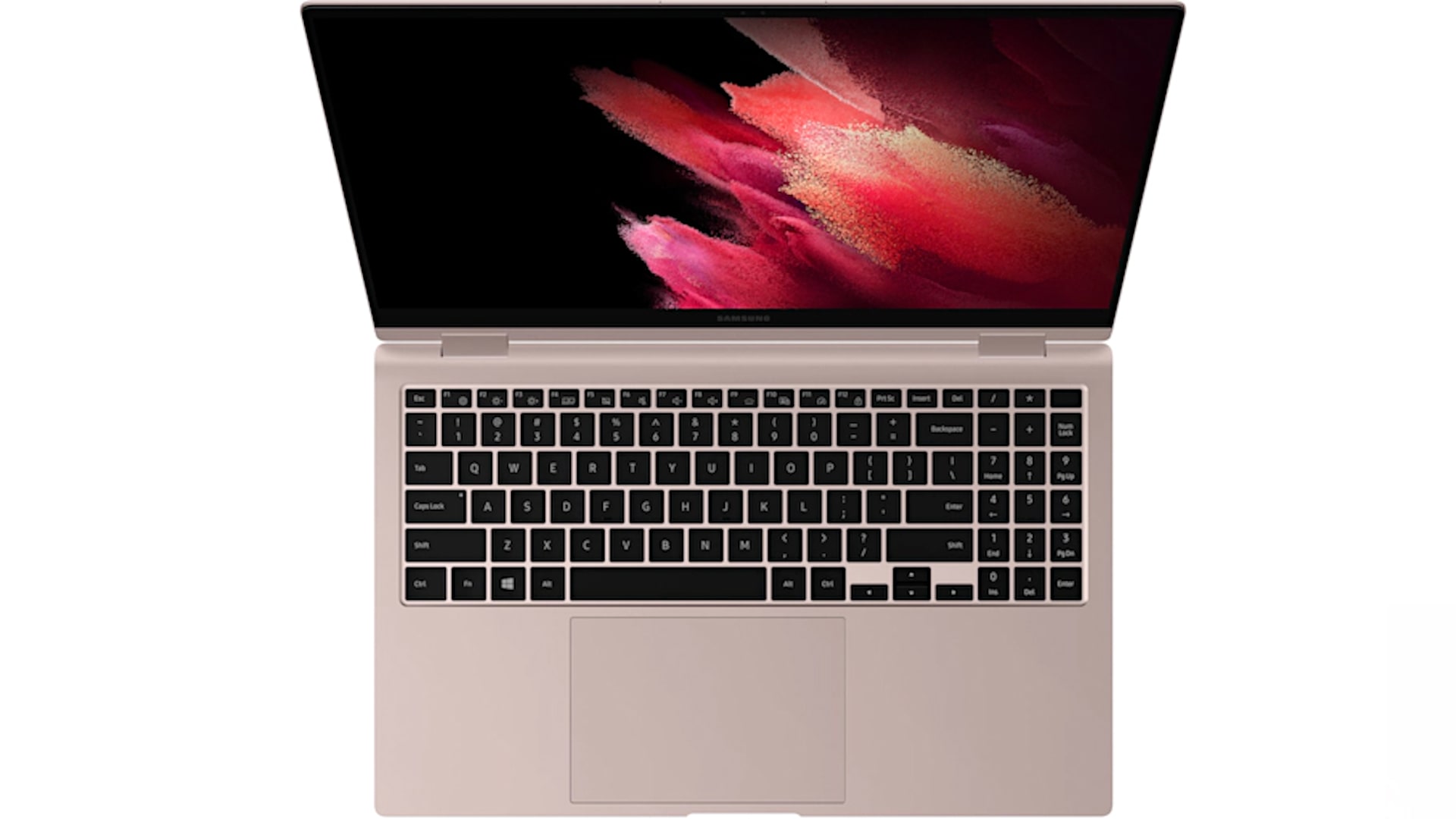
So yes, the S-pen is included with this. No, there is not a silo for it but that allows for them to give you something that’s a bit bigger in size and more comfortable to use.
Samsung Galaxy Book Pro 360 is available in two colors. If you don’t like Mystic Bronze color (looks a little pinker than bronze in person) there’s also a Mystic Navy color, which is a dark blue color. So at least you have your choice there.
There are two configurations available with those two prices that I mentioned. There should be a third one coming because 5G will still be available as an option as well.
Those two configurations are both Core i7 ultrabook CPUs Intel 11th gen, this is an Intel Evo platform. The lower-end configuration has eight GB of RAM, the higher-end has 16 GB of RAM. The lower-end configuration is 512 GB of storage, the higher-end is one terabyte. Storage is an M.2 NVMe SSD. The RAM is soldered on the motherboard.
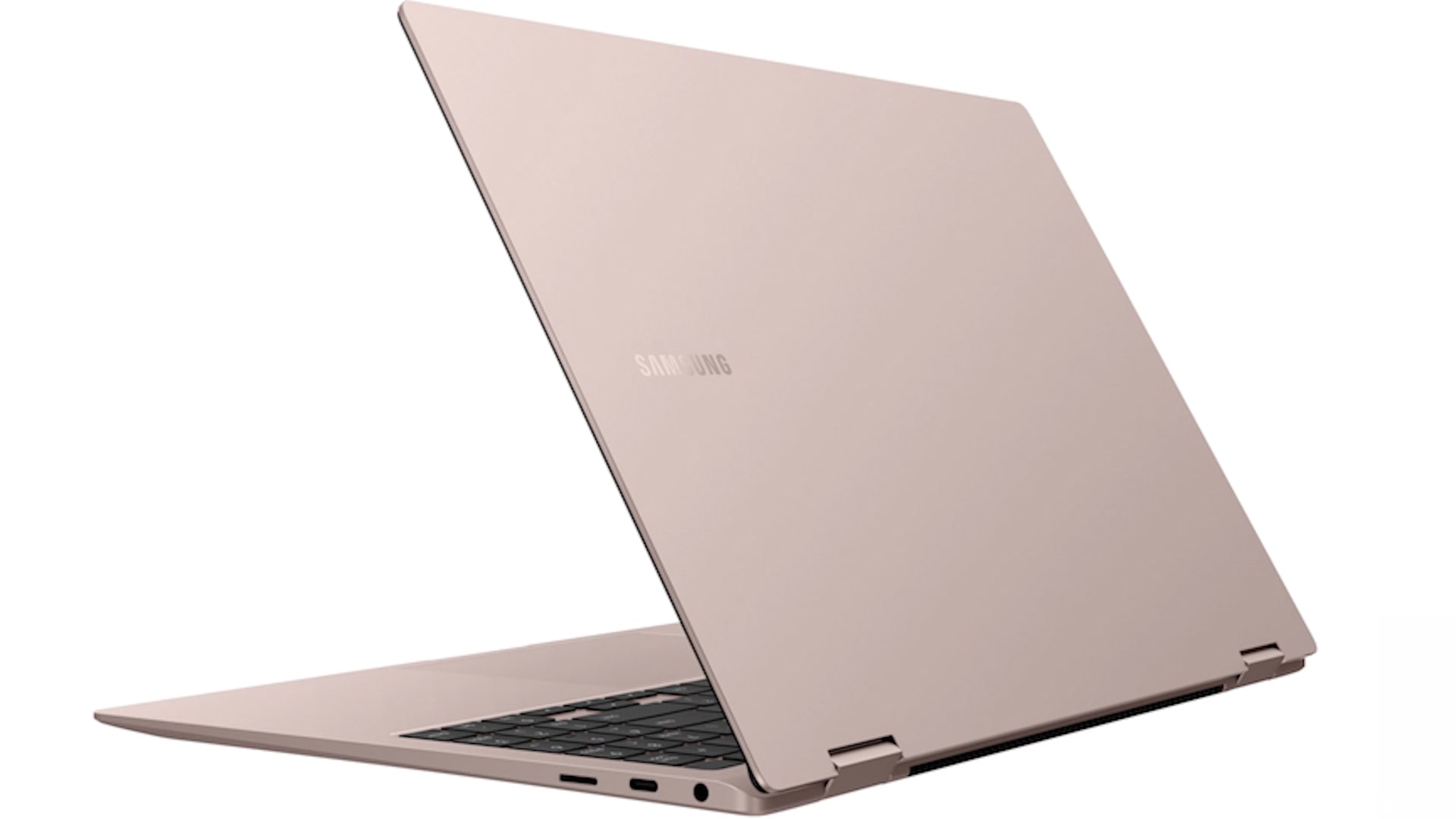
One thing I haven’t mentioned yet which is probably one of the most exciting is this has an OLED display. Samsung calls it super AMOLED, the same nomenclature they use for their phones.
That means nicely saturated colors and really great black levels and nice contrast levels too. So, it’s very pretty to look at. Unfortunately, also it’s really glossy.
Samsung Galaxy Book Pro 360 weighs around three pounds, which is under one and a half kilograms. It is 11.9 millimeters thick or thin, depending on how you want to look at it. That’s LG Gram’s competition territory and honestly, Samsung has been competing with LG for years making very light and thin laptops.
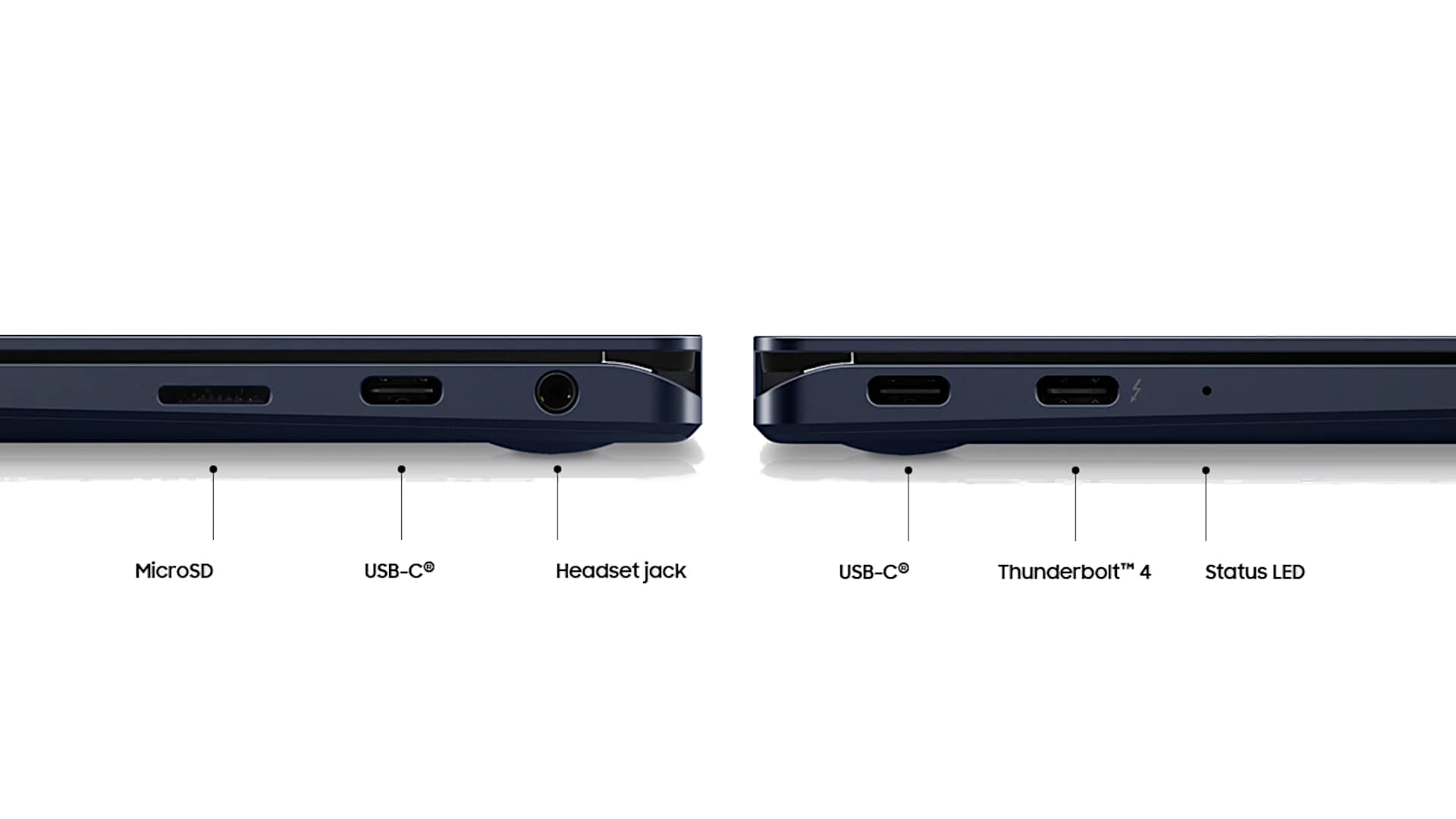
It is an aluminum casing so it’s fairly rigid. It’s good looking, but it’s not as unique looking as some of the Samsung laptops we’ve seen. Some have contrasting chrome and dark blue tops on them and all those sorts of pretty things. But, it certainly is pleasant looking.
Because this laptop is so skinny you’re not going to get any of the bigger ports. No USB-A and no HDMI for example. You do get a Thunderbolt 4 port and two USB-C ports so you can do display out and docks and all that sort of thing with it. A headphone jack and a MicroSD card slot and that is it.
This is a durable rigid aluminum chassis. It might be somewhat scratch-prone. It probably is possible to damage the finish on this if you are aggressive with it. I noticed a few scratches in the short time since I got mine.
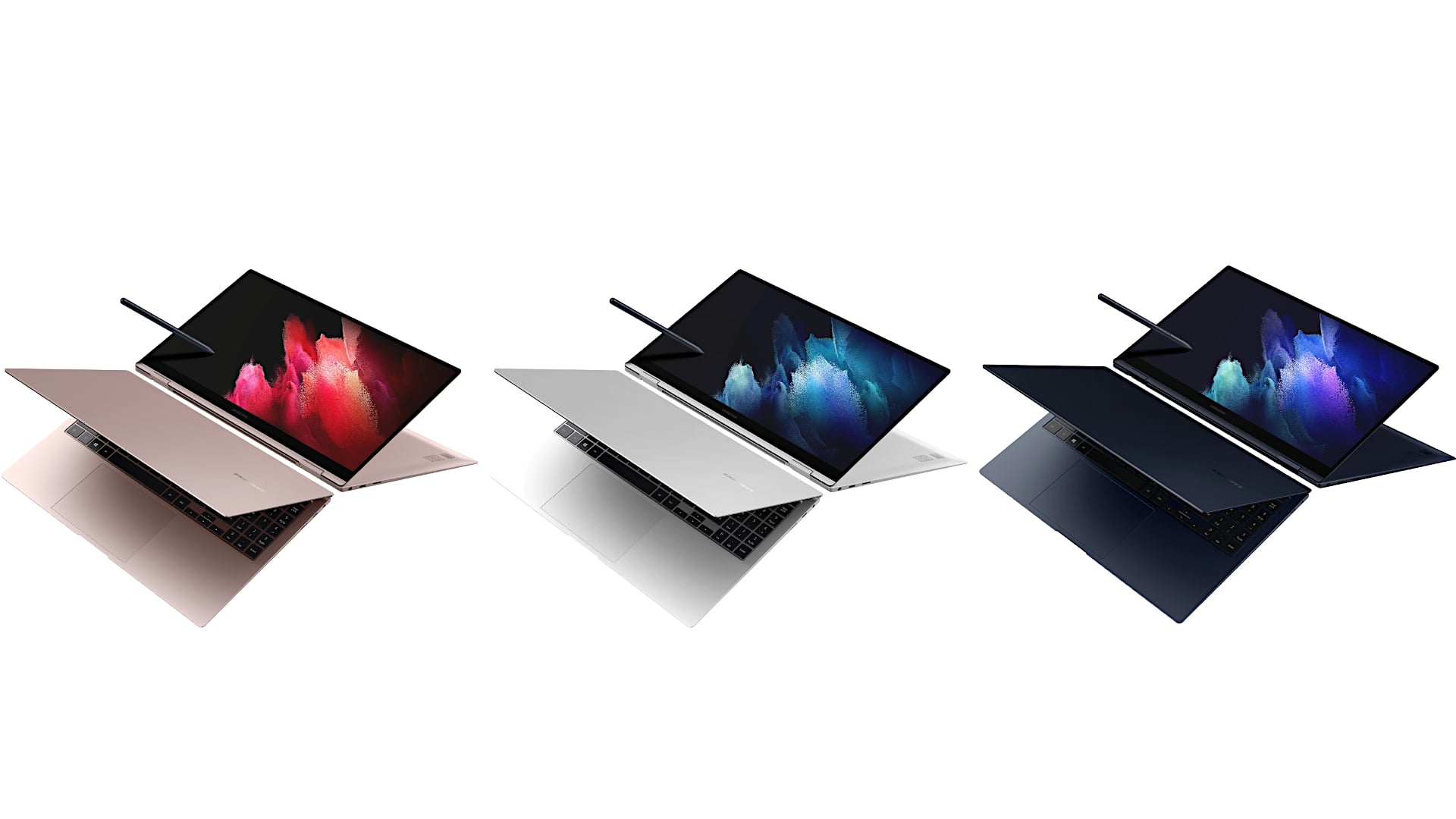
The keyboard on this also is pretty low-travel. It’s white backlit too. Sometimes Samsung really works some magic with really thin and light designs and low-key travel but this one to me just feels sort of like an XPS 13 from Dell, which means short key travel and not a lot of tactility.
I mean it’s usable, it just would not be my first pick certainly. We’re not seeing that ThinkPad wonderfulness here. The large Microsoft precision trackpad on here and feel is quite good.
Samsung Galaxy Book Pro 360 has an Intel Core i7 11th Gen ultrabook U-series 28-watt quad-core CPU. Performance is right on par with what I expect from this and mid-matches its competitors in that respect.
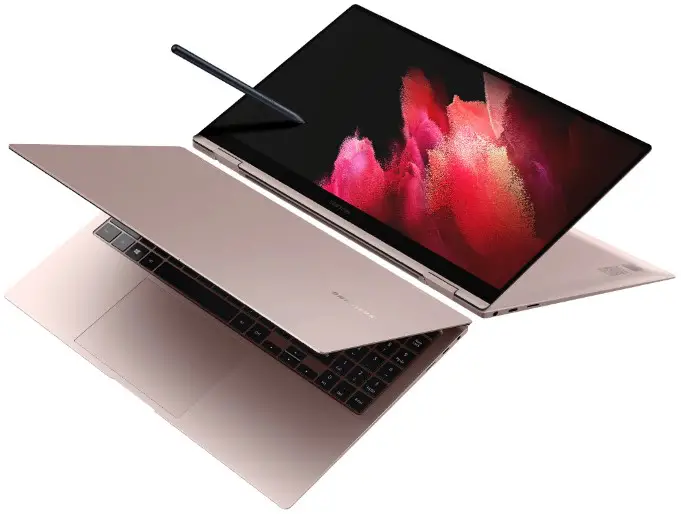
I have the 16 GB RAM model and that’s DDR4 low-power XRAM. Also, a one-terabyte NVMe SSD which benchmarks decently is not class-leading, but it’s pretty good. And you could upgrade it yourself.
Heat on this, despite the fact it’s thin and metal, isn’t bad, even when pushing it hard. You’ll hear the fans when you plug it into power for charging. Otherwise, if you’re using it unplugged, not so much. There is a noticeable amount of fan action going on but not annoying.
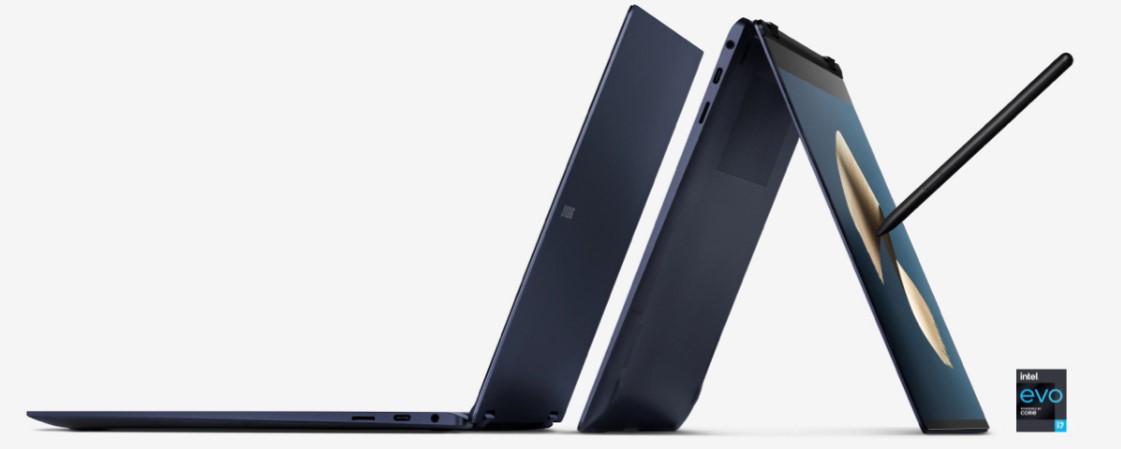
Stereo speakers are AKG branded with Dolby Atmos software. And, as usual, Samsung does a better-than-average job with laptop speakers. They sound pretty good, there’s some fullness to them, and there’s some volume. It’s still a thin laptop, it’s not a 16-inch MacBook Pro either, in terms of audio, but pretty decent.
Exploring the Features of the SAMSUNG Galaxy Book Pro 360
The SAMSUNG Galaxy Book Pro 360 is a device that intertwines innovation, performance, and a touch of artistic flair. As we delve into the intricacies of this laptop, we’ll explore its features, capabilities, and any potential areas for improvement. This detailed analysis aims to provide a comprehensive understanding for users seeking a versatile and high-performance computing companion.
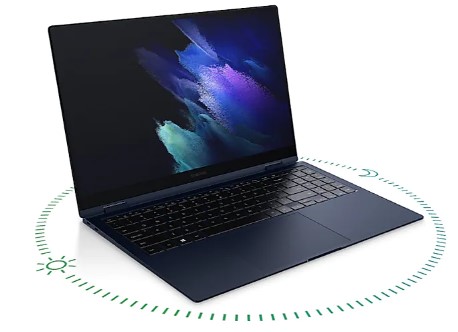
Unveiling the Hardware
Webcam and Fingerprint Scanner Integration
The Galaxy Book Pro 360 boasts a standard 720p webcam, offering decent video quality for virtual meetings and conferences. The integration of a fingerprint scanner within the power button enhances security measures, providing a seamless and efficient method for user authentication. Notably, the absence of a Windows Hello IR camera might be a point of consideration for users who prioritize facial recognition.

Software Landscape
Samsung’s software presence is evident on the Galaxy Book Pro 360, featuring proprietary applications and utilities. For users familiar with the Samsung ecosystem, the companion software offers additional functionalities, creating a cohesive experience for those who own Samsung Galaxy phones. The inclusion of device control software contributes to the overall user-friendly interface.
Customization options extend to color profiles, allowing users to tailor the display to their preferences. The dynamic mode, alongside profiles like sRGB, Adobe RGB, and P3, provides flexibility for diverse use cases. Noteworthy is the feature enabling users to limit charging to 85%, a thoughtful addition aimed at enhancing battery longevity. While Samsung’s updater app facilitates system updates, some users may prefer the option of manual updates directly from the website.
The S Pen Experience
Wacom EMR Technology
The inclusion of the S Pen introduces a touch of creativity and productivity to the Galaxy Book Pro 360. Utilizing Wacom EMR (electromagnetic resonance) technology, the S Pen delivers an exceptional user experience with precise pressure sensitivity. Artists and creators will appreciate the silky smooth response, making it one of the top contenders in the world of stylus-enabled laptops.
Battery and Charging
With a compact 68-watt-hour battery, the Galaxy Book Pro 360 manages to balance portability with longevity. The fast-charging capability, supported by a 65-watt charger, ensures quick replenishment of the battery. Surprisingly, the laptop attains an Intel Evo certification, denoting extended battery life. Samsung’s claim of up to 20 hours may be ambitious, but real-world usage sees a commendable average of around 10 hours under light workloads.
OLED Display Considerations
Considering the OLED display, a known power consumer, the Galaxy Book Pro 360 challenges expectations with its Intel Evo certification. The display, offering vibrant colors and deep blacks, contributes to an immersive visual experience. Users engaged in tasks involving photo retouching or fine art creation benefit from the high-quality display.
A Balanced Fusion of Features
The SAMSUNG Galaxy Book Pro 360 emerges as a well-rounded device, blending hardware capabilities, thoughtful software integration, and creative possibilities with the S Pen. While the absence of certain features like a Windows Hello IR camera may be a drawback for some, the device compensates with a host of other functionalities. From a vibrant OLED display to an impressive S Pen experience, the Galaxy Book Pro 360 caters to a broad spectrum of users, ranging from creative professionals to those seeking a reliable everyday laptop. Samsung’s commitment to balancing power efficiency, performance, and user customization makes this device a compelling choice in the competitive laptop landscape.
In-Depth Exploration of the Samsung Galaxy Book Pro 360: A Comprehensive Teardown and Analysis
Embarking on a journey through the internal workings of the Samsung Galaxy Book Pro 360, we delve into the intricacies of its design, components, and performance capabilities. This comprehensive analysis aims to provide a detailed understanding of the device’s inner workings and its overall prowess in various usage scenarios.
Teardown Process
Accessing the Internals
Initiating the teardown, the first step involves adjusting the display brightness to 200 nits, simulating real-world usage scenarios encompassing office tasks, web browsing, Slack usage, and light Photoshop activities. To access the internal components, the rubber feet need removal, and a suitable tool, such as a pry tool, proves effective in lifting them without any adhesive hindrance.
Internal Components
The internal structure reveals a well-organized arrangement, with four Phillips head screws securing the panel. Employing careful prying techniques, the panel is opened, unveiling the internal configuration. Notably, two fans, an uncommon sight in ultrabooks, contribute to efficient cooling, potentially explaining the audible fan noise, particularly during charging.
Storage and SSD Details
The m.2 SSD, residing within a peculiarly elongated slot, is a distinctive feature. While the full 2280 height is utilized, it appears that the design accommodates more space than necessary. Despite its unconventional appearance, the SSD configuration aligns with the device’s specifications. This detail sheds light on the internal storage architecture, an essential aspect for users considering potential upgrades.
Battery and Speaker Placement
Positioned strategically, the battery and speakers occupy designated spaces on the underside. The compact yet efficient speakers flank the battery, delivering commendable audio quality. The Wi-Fi card, an Intel Wi-Fi 6E AX-210, is soldered onto the board, ensuring stability and longevity. However, it limits user replaceability, emphasizing the importance of initial hardware choices.
RAM and Soldered Components
Examining the RAM configuration, the soldered-on nature precludes user upgrades, emphasizing the importance of choosing the appropriate memory configuration during the initial purchase. The interplay of soldered components highlights the trade-off between slim design and modular upgradeability, a common consideration in ultrabooks.
Aesthetics and Display Considerations
Device Exterior
Presented in a vibrant pink hue, the Samsung Galaxy Book Pro 360 boasts an aesthetically pleasing exterior. Available in navy for those with different color preferences, the device’s ultrathin and ultralight profile is complemented by its sturdily built structure.
Display Quality
The OLED display, a standout feature, offers vivid colors and deep blacks, enhancing the visual experience. Despite being Full HD, the display’s brightness, reaching 300 nits, may not dazzle on paper. However, real-world usability often compensates for numerical specifications. Glossiness, while potentially irksome, is a trade-off that accompanies many vibrant displays.
Performance and Conclusion
Battery Life and Performance
Navigating through various tasks, including office applications, web browsing, and light Photoshop usage, the Galaxy Book Pro 360 impresses with its commendable battery life. While the display’s resolution may not reach 2K, the decision aligns with maintaining optimal battery efficiency. The overall performance, coupled with the efficient cooling system, positions the device as a reliable companion for everyday productivity.
Price and Size Variants
Considering the device’s pricing, the Galaxy Book Pro 360 emerges as an attractive proposition. The inclusion of an OLED display, S Pen functionality, and a sleek design contributes to its overall value. Additionally, users seeking a more compact version can explore the 13.3-inch model, offering similar features in a smaller form factor.
The Samsung Galaxy Book Pro 360 stands out as a commendable device, combining aesthetic appeal, innovative features, and satisfactory performance. The teardown journey unveils the careful engineering that contributes to its slim profile and efficient internal layout. While certain components are soldered, limiting upgradability, the device caters to users valuing a balance between design aesthetics and functional capabilities. The Galaxy Book Pro 360, available in diverse color options and size variants, showcases Samsung’s commitment to delivering a versatile and compelling computing experience.
Samsung Galaxy Book Pro 360: A Comprehensive Analysis of Pros and Cons
Pros
1. Stunning Design and Build Quality
- The Galaxy Book Pro 360 boasts an ultrathin and ultralight design, making it a visually appealing and highly portable device.
- The sleek chassis and vibrant color options, such as pink and navy, cater to users with diverse aesthetic preferences.
- The integration of 3D molded carbon fiber enhances durability and contributes to a premium feel.
2. OLED Display Excellence
- The inclusion of an OLED display delivers vibrant colors, deep blacks, and an immersive visual experience.
- Despite being Full HD, the display’s quality enhances video streaming, photo editing, and overall content consumption.
3. S Pen Functionality
- The S Pen, utilizing Wacom EMR technology, offers precise and responsive input, making it ideal for artistic endeavors and note-taking.
- Pressure sensitivity and silky smooth response contribute to a top-tier pen experience, comparable to high-end alternatives like the Apple Pencil.
4. Efficient Cooling System
- The presence of dual fans, uncommon in ultrabooks, contributes to effective heat dissipation.
- While fan noise may be audible during resource-intensive tasks, the cooling system ensures optimal performance.
5. Intel Wi-Fi 6E and Thunderbolt 4 Support
- The integration of Intel Wi-Fi 6E (AX-210) ensures high-speed and reliable wireless connectivity.
- Thunderbolt 4 support enhances versatility, allowing users to connect a variety of peripherals and high-speed data transfer.
6. Impressive Battery Life
- The device’s 68 watt-hour battery, coupled with an Intel Evo certification, provides substantial battery life.
- Real-world usage scenarios yield approximately 10 hours of light use, offering efficiency for on-the-go productivity.
7. Fast Charging Capabilities
- The inclusion of a 65-watt fast charger allows users to quickly recharge the device, minimizing downtime.
8. Samsung Companion Software
- Samsung’s software ecosystem, including companion software for Galaxy phone users, enhances device control and customization.
- Features like color profile selection and charging optimization contribute to an enhanced user experience.
Cons
1. Soldered Components and Limited Upgradability
- The soldered RAM and Wi-Fi card limit user upgradability, emphasizing the importance of making the right hardware choices during the initial purchase.
- While common in ultrabooks, the lack of upgradability may be a drawback for users seeking modular components.
2. Glossy Display and Moderate Brightness
- The glossy nature of the display may lead to reflections and visibility challenges, particularly in brightly lit environments.
- While the display reaches 300 nits brightness, it may not be as impressive on paper, potentially affecting outdoor usability.
3. Potentially Delicate Carbon Fiber Build
- The 3D molded carbon fiber construction, while contributing to a lightweight design, may be more susceptible to cracking compared to other materials.
- Users should exercise caution to avoid potential structural issues.
4. Limited Storage Upgrade Options
- While the device features an m.2 SSD, the peculiar design may limit storage upgrade options.
- The elongated SSD configuration, while functional, appears unconventional and may not align with standard m.2 specifications.
5. Fan Noise During Intensive Tasks
- The audible fan noise, particularly during resource-intensive tasks, may be a concern for users prioritizing a silent computing environment.
6. No Windows Hello IR Camera
- The absence of a Windows Hello IR camera limits facial recognition capabilities, relying solely on a fingerprint scanner for biometric authentication.
Conclusion
The Samsung Galaxy Book Pro 360 presents a compelling package with its stunning design, OLED display, S Pen functionality, and efficient performance. While certain limitations, such as soldered components and potential structural considerations, exist, the device caters to users valuing a balance between aesthetics and functionality. The comprehensive analysis of pros and cons offers insights for potential buyers to make informed decisions based on their priorities and preferences.
Samsung Galaxy Book Pro 360
-
Performance - 95%95%
-
Price - 93%93%
-
Value - 94%94%

